Like many extreme sports, skydiving comes with its own lexicon of technical and slang terms that can be confusing to beginners. That’s why we’ve compiled this skydiving glossary of terms to help you feel at home when you’re learning how to jump.
**This article was updated in November 2022**
No skydiving glossary of terms can be 100% complete as, like any language, the skydiving vocabulary is constantly changing. But these basics should cover everything you need to know, and if you’re ever unsure what something means, then just ask. It’s always better to know so you can focus on the jump….
Skydiving glossary of terms
Below you’ll find a detailed skydiving glossary of terms. Including definitions of skydive slang, parachuting lingo & technical skydive terms to help you learn your bridle from burble.
AAD
Automatic activation device that senses the rate of descent and altitude and activates the reserve below a set altitude.
AFF
Stands for accelerated free fall.
AGL
Stands for above ground level. Skydivers always use AGL when referring to altitude.
Airspeed
The speed at which you or the aircraft are flying through the air.
Angle of attack
The angle at which you are approaching the wind in descent.
Angle of incidence
The angle at which a canopy is trimmed for gliding.
Apparent wind
The wind perceived by an observer.
Aspect ratio
The ratio of the canopy’s width to breadth.
Backslide
To move backward in freefall relative to a neutral reference. This kind of movement is usually undesirable.
Bag
The deployment bag where you pack your canopy.
Base
The core around which a formation skydive is built. Can be a single person or a group of people.
BASE jump
A jump made from a fixed object attached to the ground. BASE stands for building, antennae, spans (bridges) and earth (cliff). BASE jumping is one of the most dangerous extreme sports.
BOC
Stands for bottom of container and refers to the location of the pilot chute.
Body position
The position of the body in freefall.
Box man
A neutral, facing earth body position in which the arms form right angles at shoulder and elbow. It’s generally considered the ideal position for formation skydiving.
Brakes
When the steering lines of the canopy are used together, they slow the parachute.
Break off
To come out of formation before opening your chute.
Bridle
The thin webbing strap from the pilot chute to the top of the canopy.
BSR
Basic safety requirements.
Burble
The area of turbulence behind you as you move through the air.
Call
The time given until your board the aircraft.
Canopy
The fabric and lines device used to land safely after a freefall. A keyword in any skydiving glossary of terms.
Cascade
The point where two lines join together so they run smoothly into one, reducing bulk and drag.
Cell
Canopies, usually square, made up of pressurized cells, usually seven or nine.
Centre point
The point around which movement takes place, usually considered to be in the middle of the torso.
Closing loop
The small loop that holds the flaps of the container closed once the pin has been guided through
Container
The part of equipment that houses the canopy.
Crabbing
When a canopy is flown at an angle sideways to the ambient wind, resulting in movement that is sideways as well as forwards.
Creeper
A board equipped with wheels where you practice freefall moves.
Cross ports
Holes in the ribs of a cell that allow air to flow through.
CRW
Canopy relative work involves flying with parachutes in close formation, sometimes holding other chutes in mid air
Current
Having jumped recently.
Cut away
Essential in any skydiving glossary of terms, cutting away is a standard emergency procedure prior to deploying the reserve. Also known as a breakaway.
De-arch
When you flatten out or reverse one’s body position from the normal arched box man
Data card
Every parachute carries a data card with information on the reserve parachute, including all relevant details.
Decision altitude
The altitude at which a skydiver is trained to begin execution of emergency procedures.
Deployment system
The parts of the parachute that control deployment of the canopy.
Dive loops
Loops on the front risers that make it easy to grip for steering purposes. Also called front riser loops.
Drop zone
Common term for a skydiving centre.
Exit weight
The total weight of the jumper plus all equipment.
F-111
A fabric commonly used in mid range canopies. Pronounced ‘F one eleven’.
Fall rate
The speed at which a diver falls.
Finger trap
A method of setting brakes in the desired position for the parachutes deployment.
Flare
Pulling down the brakes of the canopy in order to slow it down, resulting in a reduced descent rate.
Floater
Skydivers who leave the airplane before base are called floaters as they use a slow fall rate.
Funnel
This occurs when one or more skydivers gets themselves in an unstable body position.
Glide ratio
The distance a canopy flies forward compared to downwards movement.
Grips
Using hands to hold onto other skydivers in freefall or during aircraft exits.
Grippers
Holds built into formation skydiving jumpsuits.
Ground speed
The speed of an airplane or skydiver over the ground, rather than through the air.
Hand deploy
To activate the parachute manually deploying the pilot chute.
Heading
The direction the aircraft, skydiver or parachute is facing.
Holding
Flying directly into the ambient wind.
Hook knife
A small knife carried in the jumpsuit or on the parachute harness designed to cut lines or webbing
Hook turn
A turn of 90-degrees or more executed close to the ground.
Hot fuel
When the airplane does not shut down during fueling.
In date
A reserve packed within the previous 120 days is said to be ‘in date’.
Jump run
The flight path taken by the jump plane.
Jumpsuit
A garment designed for specific skydiving applications such as FS, freestyle or accuracy. Read this guide to tandem skydive clothing to find out more.
Jumpmaster
A jumpmaster has all of the privileges of an instructor except that they cannot supervise a first jump course, sign off licenses, or manage a student programme.
Key
A signal to move on to the next step in a skydive.
Line of flight
An imaginary line corresponding to the jump plane’s path over the ground.
Log book
A log of activity and achievements in order to document experience.
MSL
The mean sea level is used by pilots when defining altitude.
Manifest
A list of skydivers in the plane
Out landing
Landing off target.
Pin
1) The skydiver who first gets to the base. 2) The act of docking on the base. 3) The closing pin of the home or reserve container.
Pilot chute
A small, round parachute that acts to extract the parachute from the container and deploy it.
PLF
A parachute landing fall is a technique used to minimize injury during rough landings.
Post dive
The review of a skydive after everyone has landed. A skydiving glossary of terms should come in handy here.
Pull out
A hand deployed pilot chute packed inside the container and pulled out using a handle.
Pull up cord
A piece of cord used to pull the closing loop through the grommets of the container.
RSL
The reserve static line is a line from the home risers to the reserve cable.
Relative wind
The apparent wind felt by a jumper in freefall.
Reserve
The auxiliary parachute carried on every jump.
Rip cord
The deployment system on all reserves and most student parachutes.
Rig
Skydiver slang for the entire parachute.
Rigger
Someone qualified to be pack parachute rigs.
Rigger’s certificate
The certificate possessed by a rigger as proof of qualifications.
Risers
The webbing that connects the harness to the suspension lines.
Round
A formation where each skydiver grips the arms of those next to him, also known as a star.
Running
When a canopy is flying with the ambient wind.
S&TA
Safety and training advisor.
SIM
The skydiver’s information manual.
SOS
A single operation system which simplifies emergency procedures by combining the functions of the cut away and reserve handle.
Seal
Reserve parachutes have a small lead seal on a piece of red thread around the closing pin indicating the reserve has not been opened since it left the rigger’s hands.
Slider
A rectangular piece of nylon fabric with a grommet at each corner through which the canopy’s suspension lines are threaded.
Slot
Your position in the skydive or on the plane.
Spot
The position of the aircraft when the jumpers exit.
Square
A ram air parachute as opposed to a round chute.
Stabiliser
The vertical strips of cloth attached to the end cells of the canopy improving your ability to fly straight.
Stall
When the angle of attack becomes too high to sustain lift, the wing is stalled.
Static line
When the parachute deployment system is attached to the airplane with a cord, resulting in deployment immediately after exit.
Steering lines
Lines that run from the steering toggles on the rear risers to the trailing edge of the parachute.
Steering toggles
Handles attached to the end of the steering lines to facilitate their use.
Style
A type of freefall competition where an individual skydiver attempts to execute moves in a specified time period.
Suspension lines
The lines from the risers to the canopy.
Swoop
1) Diving down to a formation or individual in freefall. 2) To aggressively approach the landing area in order to produce a flat and exciting landing.
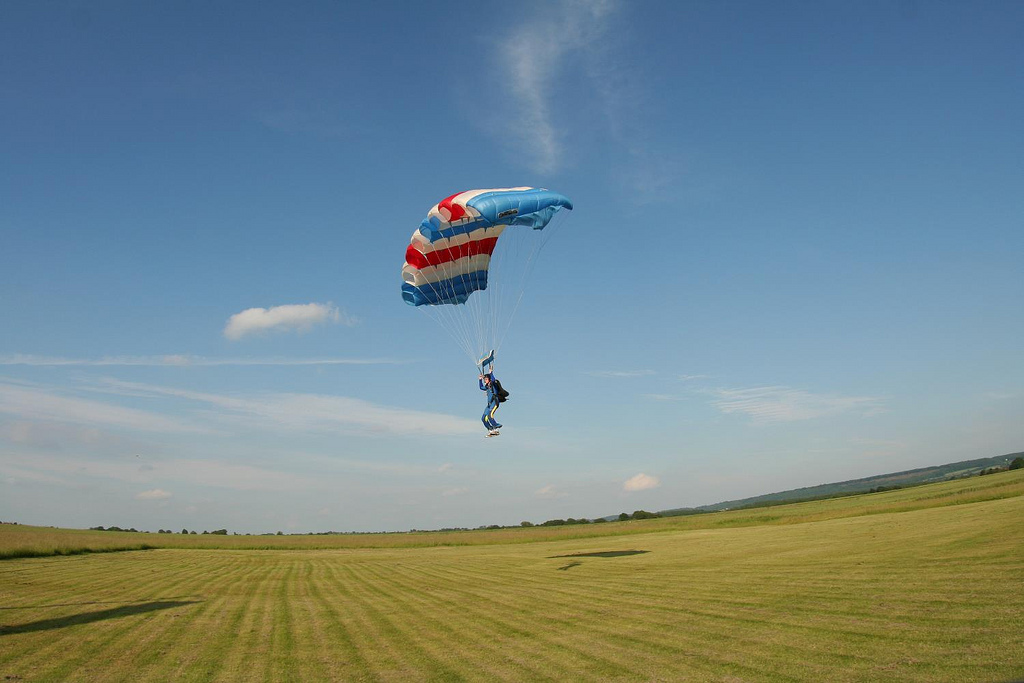
Tandem
Parachute jumps in which two skydivers, usually an instructor and student, share one parachute.
Terminal velocity
The speed at which drag matches the pull of gravity, resulting in a constant fall rate.
Track
To assume a body position that creates a high forward speed.
Turn around load
When the aircraft does not shut down between loads, but lands and picks up skydivers for immediate departure
Uppers
The upper winds at exit altitude.
Wave off
Prior to deployment a skydiver makes a clearly defined arm motion to indicate to others that he is about to open his parachute.
WDI
Wind drift indicator.
Weights
Many lighter skydivers wear a weight vest to give them a fast fall rate.
Wind line
An imaginary line from the desired landing area along the direction the wind is blowing.
Wing loading
The ratio of weight born by a wing to its surface area.
So, there you have a skydiving glossary of terms. We hope some of them come in useful. Check out our skydiving experiences to book a jump for yourself.



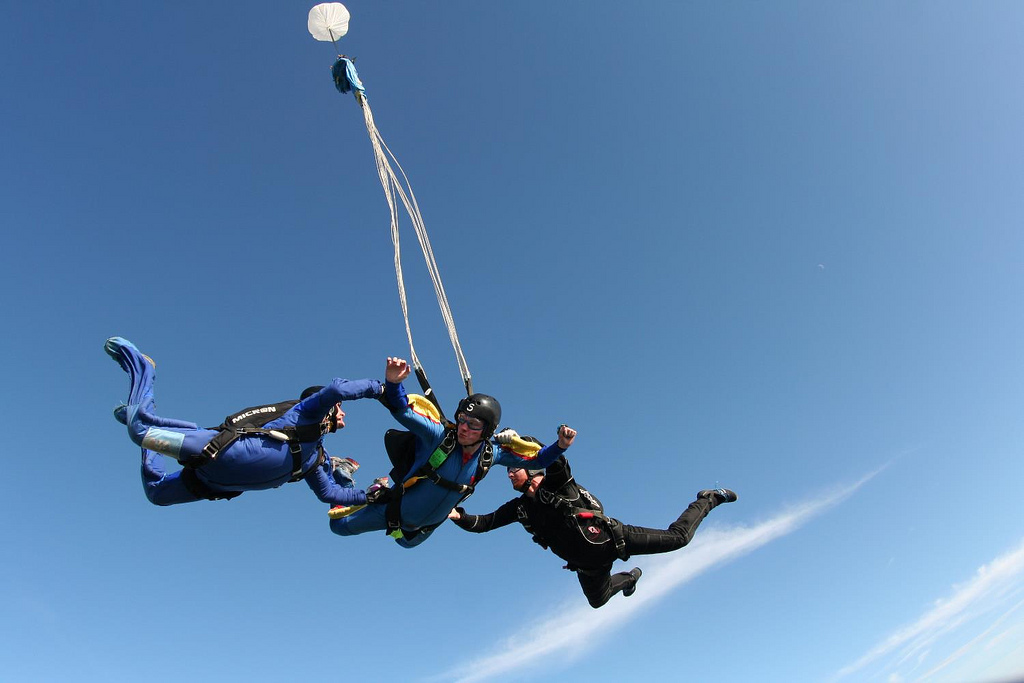
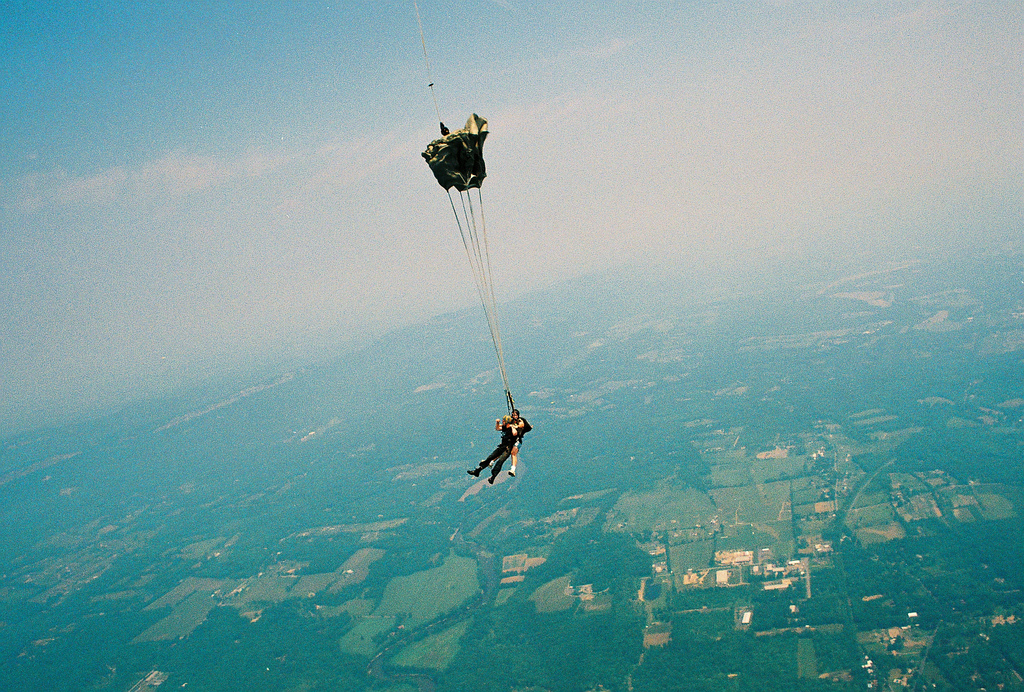

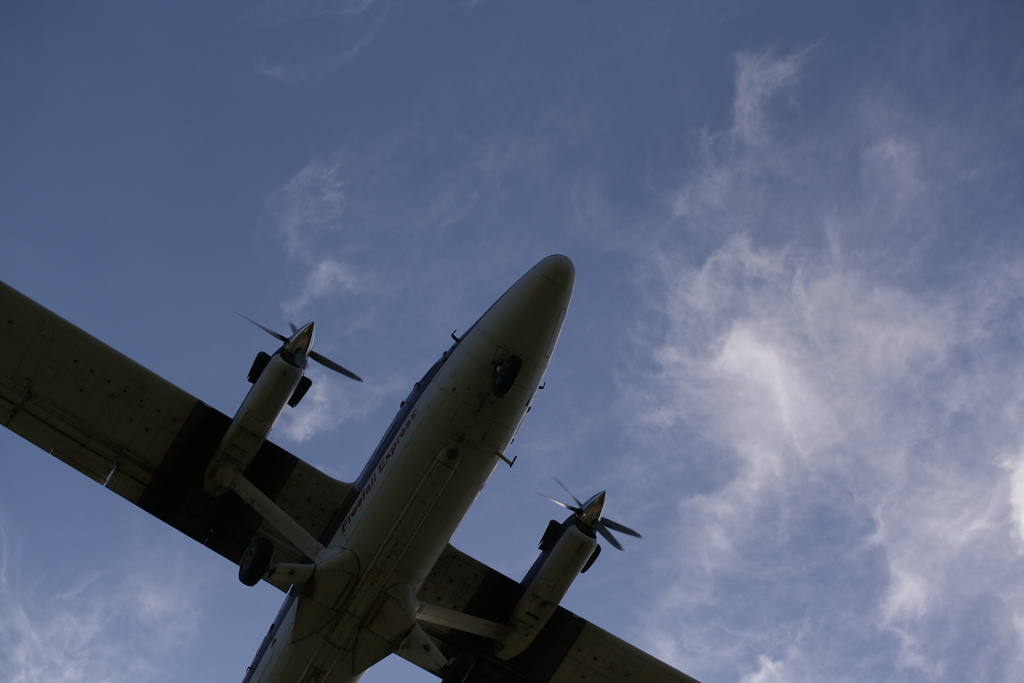
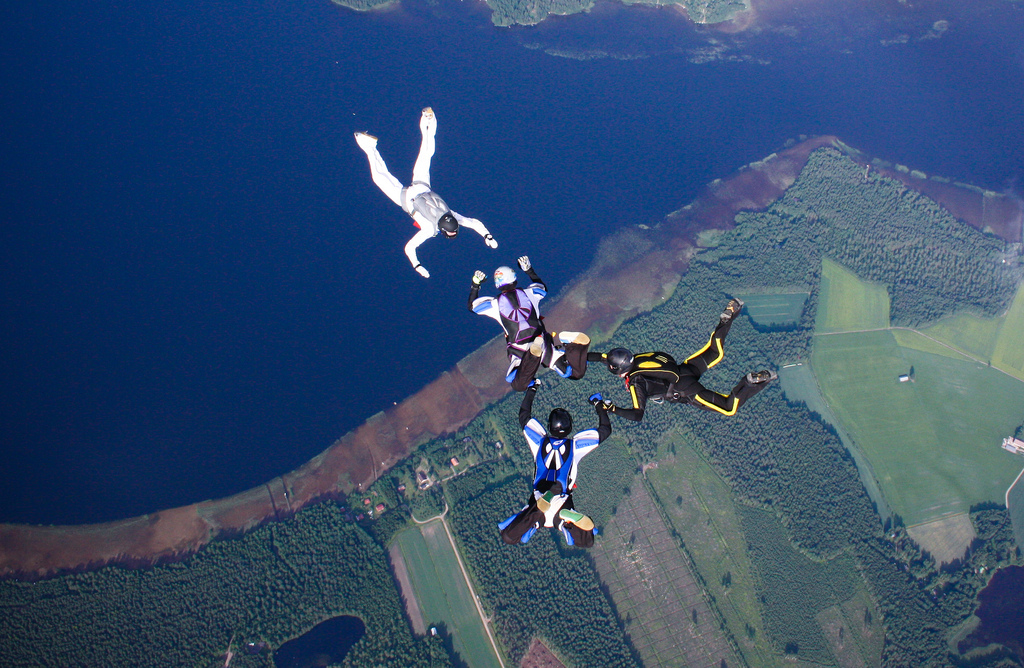
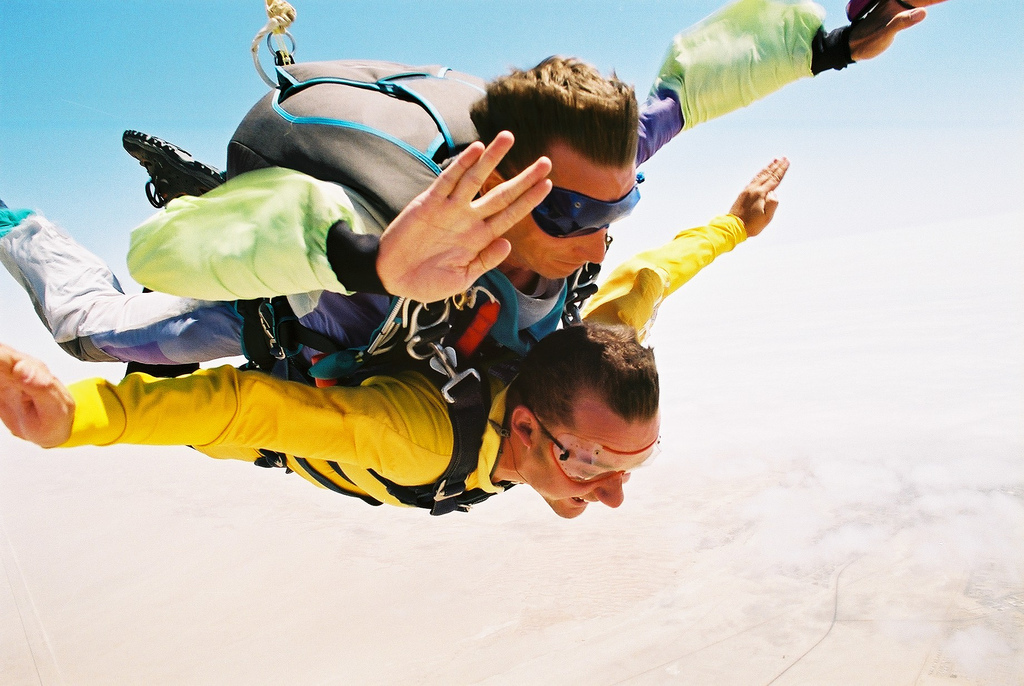
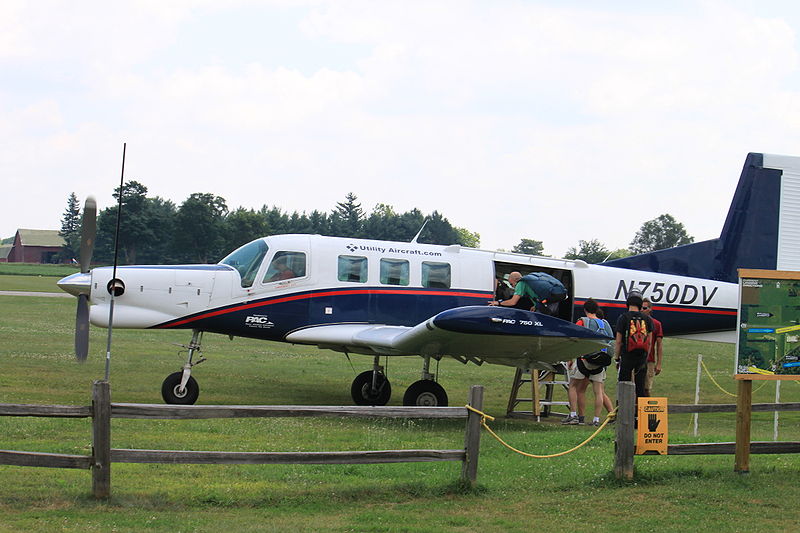









Wufo
Reference to non jumping spectators that as wut for you do this?
Ummm, let’s just say it’s not a “nice” term that is used for a non-jumper…..
Thanks for the term. Considering its not very polite – shall I add it to the article?